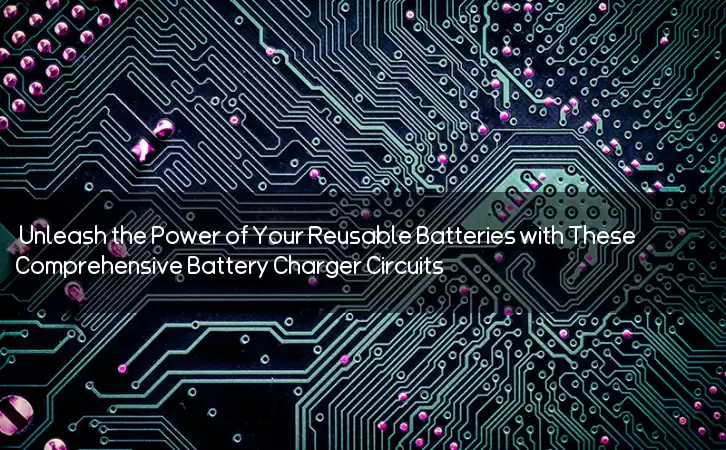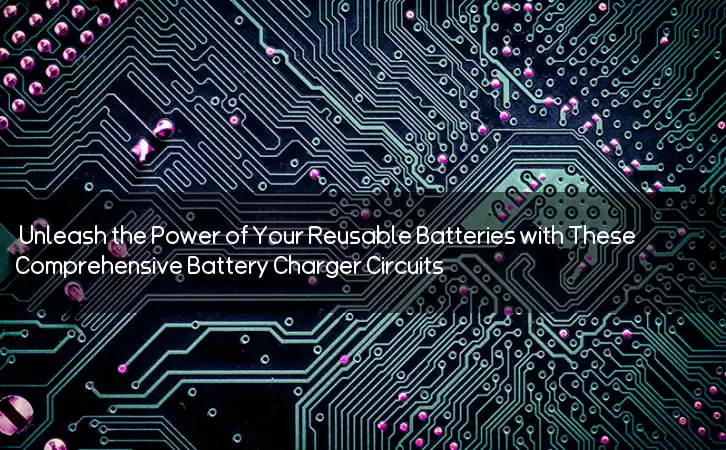Information Center
Unleash the Power of Your Reusable Batteries with These Comprehensive Battery Charger Circuits
Published:2023-08-08 00:33:32 Author:Green WCND Views:83Battery Charger Circuit: A Comprehensive Guide

A battery charger circuit is an electrical device designed to recharge reusable batteries such as lead-acid, nickel-cadmium, and lithium-ion. The circuit serves as a power source that will transfer current or voltage into the battery so that it can regain its lost capacity and be used again. In this article, we will take you through the fundamental components and working principles of a battery charger circuit, and discuss the different types of battery chargers available in the market.

Fundamental Components of Battery Charger Circuit

Following are the basic components that form a battery charger circuit:
1. Voltage Regulator: It provides a regulated voltage output to the battery during the charging process to prevent overcharging.
2. Transformer: It steps down the AC voltage of the power source to a low voltage suitable for charging batteries.
3. Diodes: They help rectify the AC voltage to DC voltage.
4. Capacitors: They help filter the DC voltage and stabilize it to prevent surges.
5. Resistors: They regulate the charging current to avoid overheating or damaging the battery.
6. LED Indicators: They indicate the state of the charging process.
Working Principles of Battery Charger Circuit
A battery charger circuit operates on the principle of a constant voltage or constant current source. The charging process begins when the power source is connected to the circuit, and the voltage regulator switches to a suitable voltage output to charge the battery. The circuit first tests the battery capacity to determine the charging requirements and then applies a current or voltage to charge the battery. The charging process ends when the battery reaches its full capacity. The charging time depends on the capacity of the battery and the charging current applied.
Different Types of Battery Charger Circuit
There are three main types of battery charger circuits: linear, pulse, and switched-mode. Each type has its advantages and disadvantages, and they are suitable for different battery types and applications.
1. Linear Charger: This is the simplest type of charger, which provides a constant voltage output to the battery. It is easy to build and affordable, but it has a low charging efficiency and is not suitable for large batteries.
2. Pulse Charger: In this type of charger, the charging current is pulsed with a high-frequency waveform to improve the charging efficiency and provide a faster charge. However, it is not suitable for all battery types and can cause battery damage.
3. Switched-Mode Charger: This is the most advanced type of charger, which uses a high-frequency oscillator and switching regulator to provide a regulated voltage and current output to the battery. It has a high charging efficiency and is suitable for all battery types, but it is more expensive and complex to build.
Conclusion
In conclusion, a battery charger circuit is an essential device for recharging batteries and prolonging their lifespan. It is important to choose the right type of charger for the battery type and application to ensure efficient charging and prevent battery damage. With the knowledge of the fundamental components and working principles of a battery charger circuit, you can build your own charger and extend the life of your batteries.
Power Adapter Design and Customization Guide for Portable Electric KettlesI. Common Design Types for Portable Electric Kettle Power AdaptersPortable electric ke···
I. Common Design Types of Power Adapters External Independent Type (Most Common) Design: A standalone adapter (e.g., "black brick") connected to the p···
Handheld Vacuum Cleaner Power Adapter Selection GuideIntroductionHandheld vacuum cleaners have become a mainstream tool for household cleaning due to their port···
Drill Power Adapter Selection Guide.drill-container { font-family: Arial, sans-serif; line-height: 1.6; max-width: 800px; margin: 0 auto; padding: 20px; } .dril···





